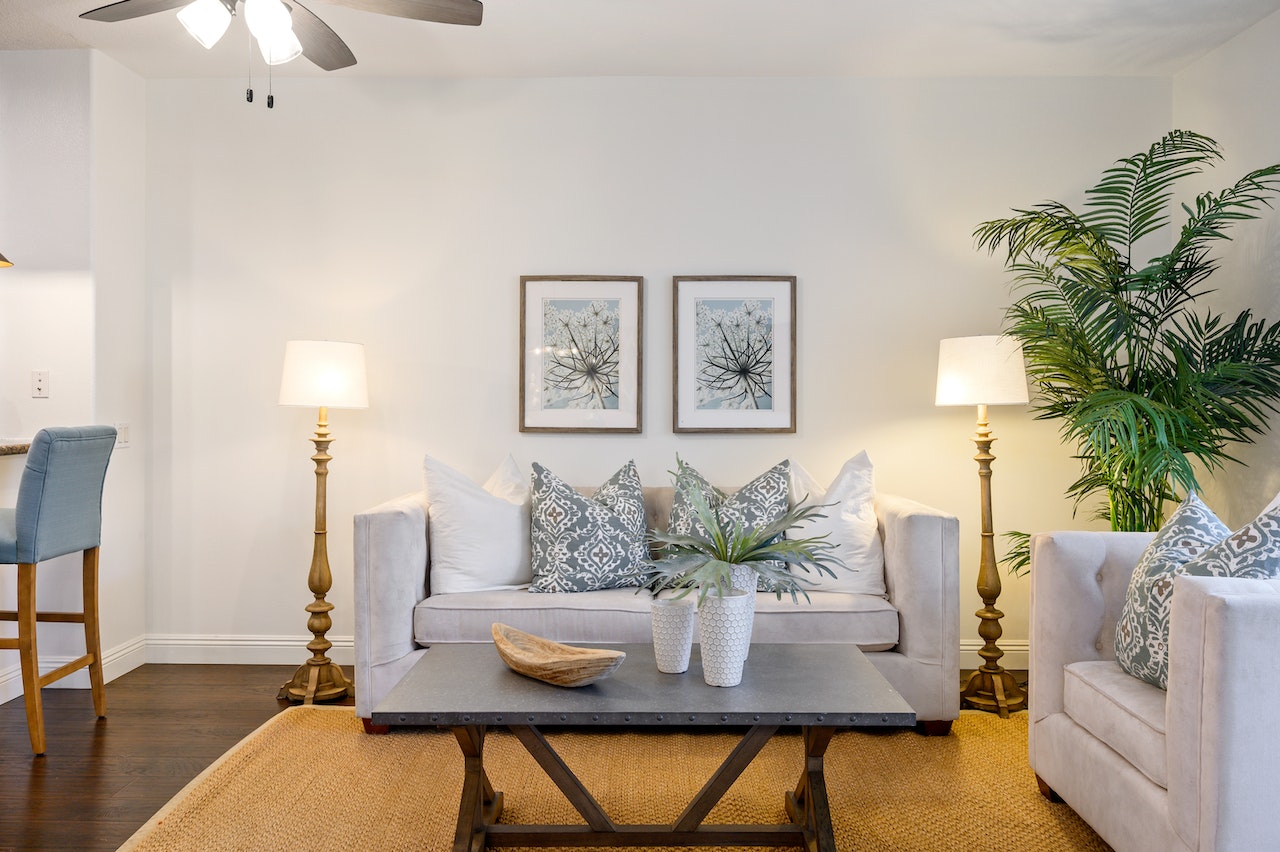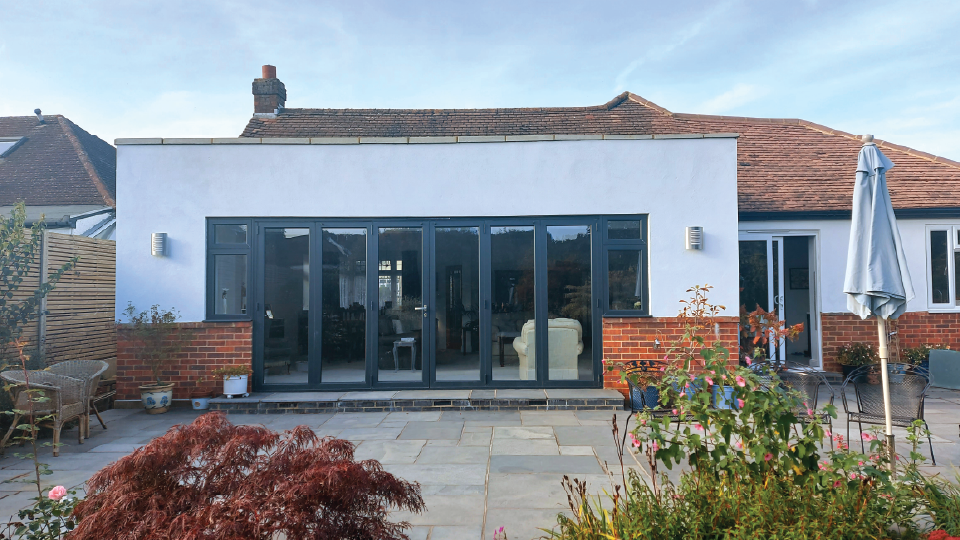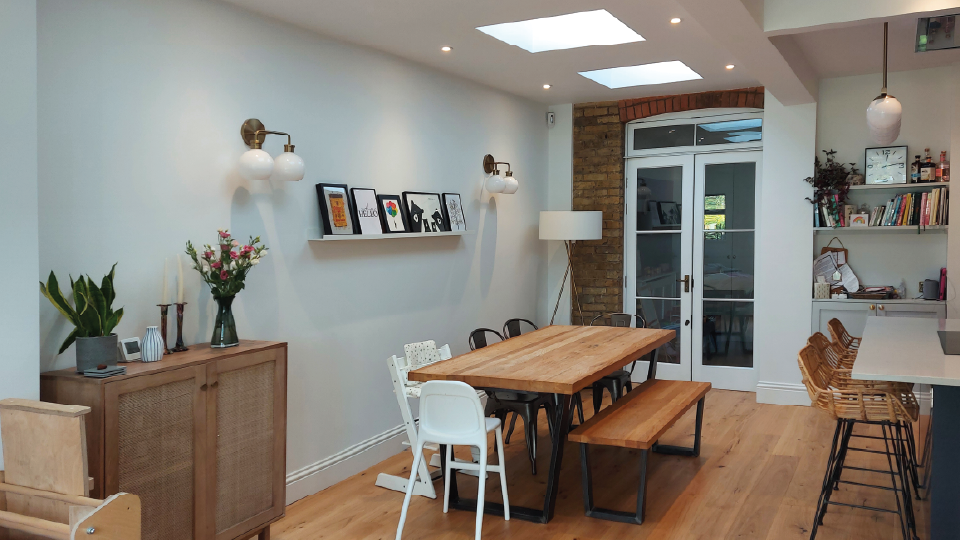12 Architectural Tips For Keeping Your Home Cool Through A Heatwave
It’s the middle of summer and the temperature is soaring and you’ve tried everything for keeping your home cool. You’re trying to beat the heat by staying inside, but even with all the windows open and fans going, it’s still hot in the house. What can you do to cool down?
Check out these 12 architectural solutions for keeping cool during a heatwave! These top tips are sure to keep you cool when the UK Summer is in full swing and the house still feels like a sauna.
1) Painting Your Home a Light Colour Helps with Keeping Your Home Cool
A lighter-coloured home will reflect more of the sun’s rays, keeping it cooler. Taking inspiration from Greece and the Mediterranean, consider painting the house white or another light hue. These techniques have been used for hundreds of years and reflect the heat in hot climates, rather than absorbing it like typical UK properties are made to do.
2) Good Insulation is Important
Insulation is normally thought of as keeping the heat in, so this sounds counter-intuitive, but good insulation will help keep the cool air in and the hot air out. Make sure your home is well-insulated, especially in the attic. This will prevent heat from seeping in, making it even hotter. A well-designed house will make the most of its insulation and mean that it stays cool with the windows and doors shut.
3) Create Cross-Breezes
Another way to keep cool air circulating is by opening up windows on opposite sides of the house. This will create a cross breeze that will help ventilate the house and keep it cooler. If your house doesn’t have very good insulation, it will get hotter with the windows shut. This means that it is then better to open the windows and doors to allow the breeze to travel through the house.
4) Keep windows shaded
During the hottest hours of the day, keep windows shaded with curtains. We are used to opening our curtains in the morning, and then closing them when it gets dark, but this isn’t the best plan in the summer when keeping your home cool. Closing curtains throughout the day means that the sun rays are bounced off the back of the curtains (as many curtains are lined with white material already) and keeps the room cooler for longer.
Alternatively, installing some traditional shutters can allow you to achieve a nice breeze while blocking out the harsh sun.It also adds a quaint aesthetic to your home, making you feel like you’re always on holiday!
5) Install reflective film on your windows
This will reflect the sun’s rays back outside, again reducing the build-up of heat throughout the day. They are easy to apply and you can find them in most hardware stores. Be sure to follow the instructions on the package, as some windows are not meant to have this type of film applied to them.
However, some reflective film does reduce the amount of sunlight that comes into your home at every point in the day, so you may want to consider only doing this on windows that get direct sun for most of the day.
6) Add awnings or shade structures to your outdoor spaces
These will provide much-needed shade and can help with keeping your home cool. Awnings are covers that cover an area off of a wall, such as the ones often seen outside of shops or restaurants, which give a shady place for someone to sit. They can be retracted when not in use, and some shade structures are even portable so you can move them around to where you need them most. There is a wide range of shade structures available for different price and area ranges, so this is a great option for most people.
7) Plant trees and shrubs around your home
The added greenery will provide shade and can help with keeping your home cool during a heatwave. Trees are also great in heat waves because they help release water vapour into the air, which can then act as a natural air conditioner.
Be sure to plant them in strategic locations so they provide the most shade possible. Work out which rooms get the hottest and at what time of day to see where a plant would be best suited, but you will have to take into account the lighting levels this gives you for the rest of the year so as not to make your house too dark in the winter.
8) Install solar screens on your windows
Similar to reflective window film, solar screens will block the sun’s rays, keeping your home cooler. They work by reflecting the sun’s heat away from your windows and can be found in most hardware stores. Solar screens are more durable than window film and will last longer, but they can be more expensive.
They also block out less light than window film, but you may still want to consider only using them on windows that get direct sun for most of the day, to make sure you maximise your light throughout the rest of the year.
9) Install Ceiling Fans

Ceiling fans circulate the air in your home, making it feel cooler. They are a great energy-efficient way to keep your home cool, as they use less electricity than air conditioners.
Be sure to install them in the rooms that get the hottest first, and make sure they are installed correctly so they rotate in the correct direction (most have a switch on the side of the motor housing that changes the direction of rotation).
Ceiling fans can also help to circulate heat in the winter, so they are a great addition to any home. These have been used in America for decades in states that get very hot in the summer because they are cheaper than air conditioning but are still very effective.
10) Use a Whole-House Fan
A whole-house fan is a large fan that is installed in your attic and pulls the hot air out of your home and replaces it with cooler air from outside. They are very effective at cooling down your home, but they should only be used when the outside air is cooler than the inside air, so usually in the evening or early morning. Whole-house fans can be expensive to install, but they are a great way to keep your home cool and save on your energy bills.
11) Use a Dehumidifier
Humidity can make it feel hotter than it actually is, so keeping the air in your home dry can help you stay cool. Dehumidifiers work by removing moisture from the air, making it feel cooler and more comfortable. They are especially effective in rooms that tend to be more humid, such as kitchens and bathrooms.
12) Turn On Your Air Conditioner
If all else fails, installing an air conditioner is second nature for construction industries in countries like the USA. If you decide to invest in this home addition, be sure to set it to the coolest setting that is comfortable for you, and clean the filters regularly.
Air conditioners can be very expensive to run, so only use them when absolutely necessary. But during a heatwave, they can be a lifesaver.
These are just a few tips to help keep your home cool during a heatwave. By following these tips, you can stay comfortable and safe during extreme heat. Do you have any other tips to add? Let us know or give us a call for some assistance in making these a reality.
If you have enjoyed reading this blog why not check out some of our other ones here.
And if you’d like to see some of our previous work – why not start with this one!





